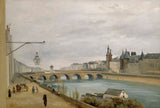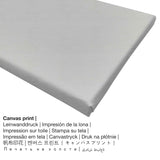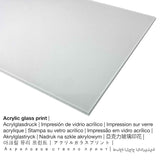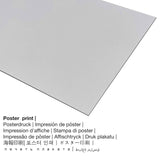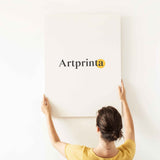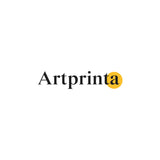Camille Corot, 1830 - Pont au Change, hụrụ ebe Gesvres (1830). - ọmarịcha nka
Ụtụ gụnyere. Mbupu gbakọrọ na ndenye ọpụpụ.
Nkọwa ngwaahịa nka
N'elu 190 year old masterpiece named "The Pont au Change, saw the quay of Gesvres (1830)." was made by Camille Corot in 1830. The over 190 years old original was made with the following size: Ogologo: 50 cm, obosara: 72,5 cm. Ihe osise a nwere ihe odide a: Stamp Sales - red stamp sales Corot (Lugt 460) at the bottom left of the canvas. On the back, the frame stamp wax sale Corot (Lugt 3905). Ihe nka bụ akụkụ nke mkpokọta nka dijitalụ nke Ụlọ ihe nkiri Carnavalet Paris, nke bụ ụlọ ngosi ihe mgbe ochie raara nye akụkọ ihe mere eme nke obodo Paris. Site n'ikike nke: Musée Carnavalet Paris (ikike - ngalaba ọha).In addition to that, the artwork has the creditline: . Besides, the alignment is landscape with an aspect ratio of 3: 2, meaning that the length is 50% longer than the width. Camille Corot was a male painter, whose art style can be classified as Realism. The Realist artist was born in 1796 and deceased at the age of 79 na 1875.
Ngwa ngwaahịa ndị ahịa anyị nwere ike ịhọrọ
In the dropdown menu right next to the product offering you can select a material and a sizeaccording to your preferences. We allow yout to choose among the following variants:
- Akwụkwọ mmado ebipụtara (akwa akwa akwa): The poster print is a printed sheet of canvas paper with a fine finish on the surface, that resembles the original artwork. It is excellently suited for framing the art copy using a custom-made frame. Please note, that depending on the size of the canvas poster print we add a white margin of approximately 2-6cm around the print motif, which facilitates the framing with your custom frame.
- Mbipụta nke aluminom: An Aluminium Dibond print is a print material with a true depth. A direct Aluminium Dibond Print is the best introduction to art reproductions produced on aluminum. For our Aluminium Dibond option, we print your favorite artwork onto the aluminium composite surface. The white and bright parts of the original artpiece shine with a silk gloss but without glow. Colors are bright and vivid, the details are clear and crisp. The UV print on aluminium is one of the most demanded entry-level products and is an extremely modern way to showcase art, since it puts all of the viewer’s focus on the whole artwork.
- Bipụta na iko acrylic (nke nwere ezigbo mkpuchi iko n'elu): An acrylic glass print, which is often named as a plexiglass print, will turn the original into amazing wall décor. Beyond that, the acrylic print forms a distinct alternative to canvas and dibond prints. The artwork will be custom-made with modern UV direct print technology. The image effect of this are impressive, vibrant color tones. Our plexiglass with real glass coating protects your custom art print against light and external influences for between 40-60 years.
- Mbipụta kanvas: A printed canvas, not to be mistaken with a real canvas painting, is an image printed from a UV direct printing machine. Hanging your canvas print: A canvas print has the advantage of being low in weight, meaning that it is easy and straightforward to hang up your Canvas print without the support of extra wall-mounts. Because of thata canvas print is suitable for all types of walls.
Ederede iwu dị mkpa: We try all that we can to describe our art products as clearly as possible and to demonstrate them visually. Nevertheless, some tone of the printing material and the imprint may differ slightly from the image on the screen. Depending on your settings of your screen and the quality of the surface, not all colors can be printed one hundret percent realistically. Bearing in mind that all are printed and processed manually, there may also be minor deviations in the motif's exact position and the size.
Nkọwa ngwaahịa ahaziri ahazi
| Ụdị edemede: | nka nka |
| Mmeputakwa: | dijitalụ mmeputakwa |
| Usoro mmepụta: | mbipụta dijitalụ (Mbipụta UV ozugbo) |
| Ihe ngosi: | emepụtara na Germany |
| Stockdị ngwaahịa: | a na-achọ |
| Eji ngwaahịa a chọrọ: | imewe ụlọ, mgbidi gallery |
| Ndepụta: | nhazi odida obodo |
| Njikwa oyiyi: | 3: 2 |
| Nsonaazụ nke oke onyonyo: | ogologo bụ 50% ogologo karịa obosara |
| Akụrụngwa dị: | mbipụta ọla (aluminium dibond), mbipụta akwụkwọ mmado (akwụkwọ kwaaji), mbipụta kanvas, mbipụta iko acrylic (nwere ezigbo mkpuchi iko) |
| Mpempe akwa akwa (akwa akwa na etiti ihe ndọtị) nha: | 30x20cm - 12x8", 60x40cm - 24x16", 90x60cm - 35x24", 120x80cm - 47x31", 150x100cm - 59x39" |
| Acrylic glass print (nwere ezigbo mkpuchi iko) nhọrọ: | 30x20cm - 12x8", 60x40cm - 24x16", 90x60cm - 35x24", 120x80cm - 47x31" |
| Nhọrọ nha nke akwụkwọ mmado (akwụkwọ kwaaji): | 60x40cm - 24x16", 90x60cm - 35x24", 120x80cm - 47x31" |
| Nhọrọ nke mbipụta aluminom (aluminium dibond material) | 30x20cm - 12x8", 60x40cm - 24x16", 90x60cm - 35x24", 120x80cm - 47x31" |
| Nhazi nke nnomi nka: | mmeputakwa na-enweghị isi |
Iberibe nkọwa nka
| Aha nka: | "The Pont au Change, saw the quay of Gesvres (1830)." |
| Nhazi nka: | sere |
| Okwu mkpokọta: | nkà nke oge a |
| Time: | 19th narị afọ |
| Emepụtara na: | 1830 |
| Ogologo afọ nka nka: | 190 afọ |
| Akụkụ izizi (ọrụ nka): | Ogologo: 50 cm, obosara: 72,5 cm |
| Akanyere (ọrụ nka): | Stamp Sales - red stamp sales Corot (Lugt 460) at the bottom left of the canvas. On the back, the frame stamp wax sale Corot (Lugt 3905) |
| Ụlọ ihe ngosi nka / ebe: | Ụlọ ihe nkiri Carnavalet Paris |
| Ebe ngosi nka: | Paris, France |
| Weebụsaịtị nke ihe ngosi nka: | Ụlọ ihe nkiri Carnavalet Paris |
| Licensedị ikike: | ngalaba ọha |
| Site n'aka: | Ụlọ ihe nkiri Carnavalet Paris |
Tebụl ozi omenkà
| Ihe nkiri: | Camille Corot |
| okike nke onye nka: | nwoke |
| Obodo onye nka: | French |
| Ọrụ nke onye na-ese ihe: | onye na-ese ihe |
| Obodo obibi: | France |
| Nkewa onye nka: | omenkà nke oge a |
| styles: | Ihe ngosi |
| Nwụrụ na afọ nke: | 79 afọ |
| Afọ amụrụ: | 1796 |
| Afọ ọnwụ: | 1875 |
© Nwebiisinka nke - Artprinta.com (Artprinta)
(© nwebiisinka - Musée Carnavalet Paris - Ụlọ ihe nkiri Carnavalet Paris)
Lantern. Pump Notre Dame, Clock Tower, Quai de l'Horloge, Concierge.
Paint included in the posthumous sale of the artist of May 26-28, 1875 (No. 49). Corot has left this unfinished painting, the days of July 1830 that interrupted his work. He then went to Chartres.

